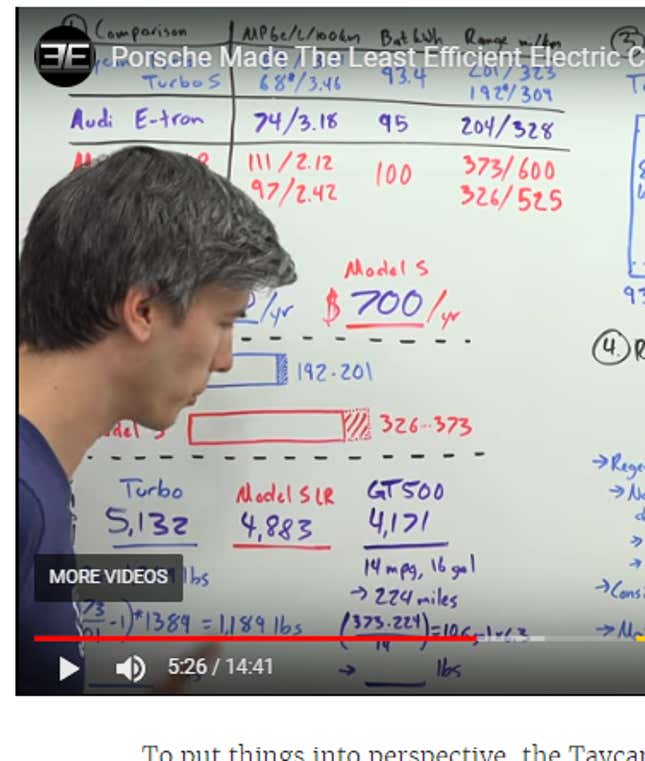Ev’s represent 2.2% of all cars today. Ev’s that aren’t battery powered represent what, 2% of EV’s?

Yeah, I’m not trying to say that EVs aren’t heavy. Apparently I’m simply spouting bad facts due to faulty memory it seems... *facepalm*
On Point 2, it reminds me of something Musk mentioned, in an interview, where he said 5% of SpaceX is working on BFR/Starship prototype, but 70% on Falcon 9.
“It’s not a load-bearing member of the vehicle, like the Taycan’s pack is. It just holds the battery cells, electrical connections and cooling pipes all in one integrated package and that’s it, pretty much. The casing is thin sheet steel, you could puncture it with a tin snips. (A set of tin snips? Whatever.)
“

It’s because the video arbitrarily throws in a GT500 as the ICE comp, which weighs 4,100 lbs (the Taycan weighs 5,100). So basically this writer did zero research, doesn’t know what the Taycan’s actual competition is (hint: it’s not a Mustang) and nobody bothered to edit her article. Honestly, why do I still read this…
Fenske explains some things well, but here he is a few volts short. He doesn’t even acknowledge the difference in-
The problems start almost immediately. For instance, the Taycan is almost one thousand pounds heavier than its competition—and more than some pickup trucks.
I was the first comment...and not sure why 2 people brought up another website as a response to me, and its not even a website I read.
This. (And I’m no Tesla fanboy. They have their share of problems).
but limiting the battery capacity artificially will definitely reduce battery warranty claims.
Publishing a lower range isn't going to reduce warranty claims by itself, but limiting the battery capacity artificially will definitely reduce battery warranty claims. That said, it's a crappy corner to cut on a $180k+ vehicle.
Right, Tesla had plenty of problems with their drive units early on, but the issues have since been solved (and there was no direct connect between the reliability and efficiency either, the issue had to do with the design of the unit, not that a more reliable unit would have necessarily been more inefficient).
“2. The MPGe figure is also shockingly bad. If the range were explained by Porsche being pessimistic, this does not explain the poor MPGe figure.”
There certainly is a crapload of people in the comments of every Porch and/or Tesla article that are butthurt that Jalopnik writers are unfairly criticizing ______. I’m on the side of Occam’s Razor... the Taycan probably got rated lower because it has lower range. Teslas probably have comparably bad overall build…
But what’s actually happening is automakers are taking it upon themselves to protect their reputation by perhaps holding back their equipment a little bit to ensure reliability and consistent performance, not just the biggest number they can hit.
And you get both here, painting Tesla as recklessly pushing the limits when their cars have better range and the established car manufactures playing it safe to put a reliable car out there implying that Teslas have suffered numerous recalls. While there were some drive unit problems with early Model Ses. There…
It is amazing how many articles there are on Jalopnik that exist just to bash Tesla, but with the porsche you go out of your way to defend it.
Tesla is already extremely safe. As long as you are not using Smart Summon or misusing AutoPilot.
Motor and inverter efficiency are the biggest advantages Tesla has over newcomers and neither was mentioned.
They may have better motor cooling but that one sided cooling on gel cells is super lame. There is no way they are properly temperature controlling fat gel cells when only one surface has contact. Even the first gen volt had better cell cooling then that with thinner gel packs and two sided cooling on the large sides. …

